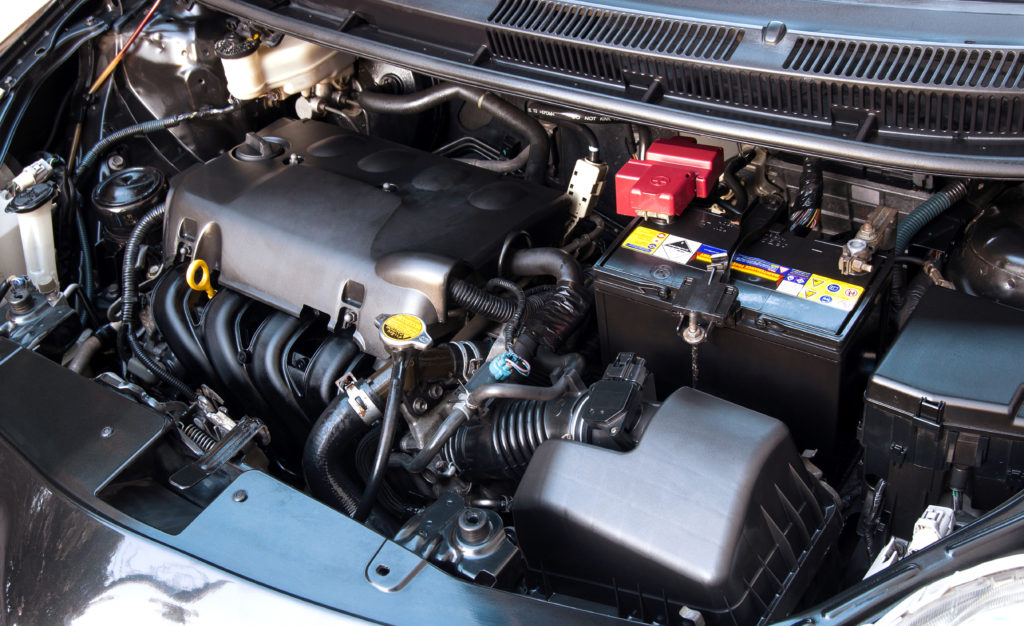Golf carts are a fun and convenient way to get around the golf course or your neighborhood. However, like any other vehicle, they require regular maintenance to keep them running smoothly. It can be frustrating when your golf cart starts to show signs of engine trouble. Strange noises, sluggish performance, and battery issues are just some of the common problems that can indicate engine trouble in a golf cart.
In this blog post, we will cover the top signs of engine trouble in your golf cart, including battery issues, ignition problems, and solenoid troubles. We’ll also discuss how faulty direction switches and speed control issues impact your golf cart’s performance. Additionally, we’ll explain why regular maintenance is crucial to prevent engine troubles and what you can do to keep your golf cart in tip-top shape. Read on to learn more about recognizing and troubleshooting common engine problems in your beloved golf cart.

Understanding the Importance of Regular Golf Cart Maintenance
Regular maintenance plays a vital role in ensuring optimal performance of your golf cart. By scheduling regular maintenance, you can prevent costly engine repairs and extend the lifespan of your golf cart. It also helps reduce the risk of unexpected breakdowns, ensuring the safety of both the driver and passengers. One of the most common maintenance tasks is checking and replacing the air filter in your golf cart’s engine. A dirty air filter can affect the cart’s engine performance and fuel efficiency. It’s also important to ensure the right amount of fuel in the gas golf cart and regularly inspect the fuel lines for any leaks. Additionally, routine maintenance includes cleaning the cart’s accessories, checking the suspension for durability, and inspecting key components such as bearings, intake, compression, carb, and armature. By staying on top of regular maintenance, you can address potential golf cart issues before they become major problems, ultimately enhancing the overall performance and reliability of your golf cart.
Recognizing Common Engine Problems in Golf Carts
Recognizing common engine problems in golf carts is crucial for maintaining optimal performance and avoiding costly repairs. By being aware of the signs of engine trouble, golf cart owners can take timely action to address any issues. One of the most common indicators of engine trouble is the presence of unusual noises or vibrations. Additionally, any loss of power or problems with acceleration should not be ignored. Electrical problems, including blown fuses or faulty ignition coils, can also affect the cart’s engine performance. Fuel-related issues such as fuel mixture problems or clogged fuel filters should be addressed promptly. Similarly, steering system problems like difficulty steering or loose connections can impact the overall functionality of the golf cart. By staying vigilant and addressing these issues promptly, golf cart owners can ensure a smoother and more enjoyable experience on the golf course.
Battery Issues and Troubleshooting
Regular monitoring of your golf cart’s battery charge level is essential to ensure optimal performance. Additionally, checking for corrosion on the battery terminals and cleaning them if necessary helps maintain a strong connection. Testing the battery voltage using a voltmeter ensures that it falls within the correct range. If you encounter low charge issues, troubleshooting could involve inspecting for faulty wiring or a worn-out ignition switch. Another important step is to inspect the battery connections for any loose or damaged components. By following these steps, golf cart owners can avoid common battery-related problems and keep their golf cart running smoothly.
Ignition or Motor Problems
When it comes to your golf cart’s engine, there are some common signs to look out for that may indicate ignition or motor problems. One of the most common issues is damage, which can manifest as loose connections, dirty spark plugs, or faulty solenoids. It’s important to regularly monitor the oil level and quality, addressing low oil levels or dirty oil filters promptly to ensure the cart’s engine runs smoothly. Another area to inspect is the carburetor, as any signs of damage should be addressed by cleaning or replacing it as necessary. Additionally, electrical components such as ignition coils, field coils, and wiring should be inspected for signs of wear or corrosion. Ignition system issues, including problems with the starter motor, ignition coil, or ignition switch, should also be addressed promptly. By staying vigilant and addressing these potential issues, golf cart owners can ensure their carts’ engines remain in optimal condition for longer.
Solenoid Troubles
Inspecting the solenoid connections is crucial to ensure optimal performance of your golf cart’s engine. Take the time to check for loose or dirty terminals, and clean or tighten them as needed. Similarly, examine the solenoid wiring for any signs of damage, such as frayed or loose connections, and repair or replace them if necessary. Testing the solenoid’s functionality using a voltmeter is also important. This will help you ensure that it is properly engaging and disengaging. Promptly addressing any issues with the solenoid, such as faulty coils or a stuck solenoid, is essential to prevent further damage. Additionally, regularly cleaning the solenoid can help prevent dirt or debris buildup and maintain its optimal performance.
How Faulty Direction Switches Impact Your Golf Cart’s Performance?
Faulty direction switches can drastically impact your golf cart’s performance. From difficulty changing direction to unresponsiveness, these issues can affect control and maneuverability, posing safety risks. Promptly addressing faulty switches and ensuring regular maintenance can prevent accidents and damage. Consider upgrading to a high-quality switch for improved overall performance.
Speed Control Issues in Golf Carts: What to Look for?
Look out for sudden changes in speed, like jerky movements or acceleration problems. Examine throttle components for signs of damage or wear. Check fuse connections and address any electrical issues. Regular maintenance ensures a smooth and consistent golf cart experience.
The Consequences of Neglecting Golf Cart Maintenance
Neglecting regular maintenance for your golf cart can have serious consequences. One of the most common outcomes is engine trouble, which can significantly reduce the lifespan of your cart’s engine. By skipping maintenance, you increase the risk of unexpected breakdowns, leaving you stranded on the golf course when you least expect it. Additionally, neglecting maintenance could void your golf cart’s warranty, resulting in costly repairs that could have been avoided.
But the consequences go beyond engine issues and financial burdens. Neglected maintenance can lead to safety hazards as well. Faulty steering, brakes, or electrical components can put you and others at risk while operating the cart. Safety should always be a top priority when it comes to golf cart ownership.
Regular maintenance not only ensures the safe operation of your golf cart but also helps maintain its value. By keeping up with routine maintenance such as cleaning the air filter, checking fuel lines, and properly lubricating bearings, you can prolong the durability and performance of your cart.
In conclusion, neglecting maintenance for your golf cart can have a domino effect on its overall condition and performance. It’s essential for golf cart owners to prioritize regular maintenance to avoid engine trouble, unexpected breakdowns, safety hazards, and costly repairs. By taking care of your golf cart, you can enjoy a smoother ride on the golf course and maintain the value of your investment. So, don’t overlook the importance of proper maintenance and keep your golf cart running smoothly for years to come.
Are Regular Service Checks Enough to Prevent Engine Troubles?
Regular service checks are essential for maintaining your golf cart’s engine, but they may not completely prevent all engine troubles. While these checks help identify potential issues, problems can still arise between maintenance appointments. Promptly addressing signs of engine trouble and combining regular maintenance with attentive driving habits can minimize the risk of costly repairs. Working with experienced technicians ensures comprehensive maintenance and reduces the likelihood of engine problems.
Conclusion
Regular maintenance and prompt attention to any signs of engine trouble are essential for keeping your golf cart running smoothly. Ignoring these signs can lead to more significant problems down the line and potentially costly repairs. By understanding the common engine problems and recognizing the signs, you can take proactive steps to address them before they become major issues. Remember to prioritize regular service checks as they can help prevent engine troubles and ensure your golf cart performs optimally. If you notice any of the mentioned signs or need assistance with maintenance, don’t hesitate to reach out to a professional technician who specializes in golf cart repairs.


